“It’s stressful but it’s fascinating,” said Paloma Galzi,
one of the attendees of the workshop. “Every single one is different so every
face, every time is a new experience.”
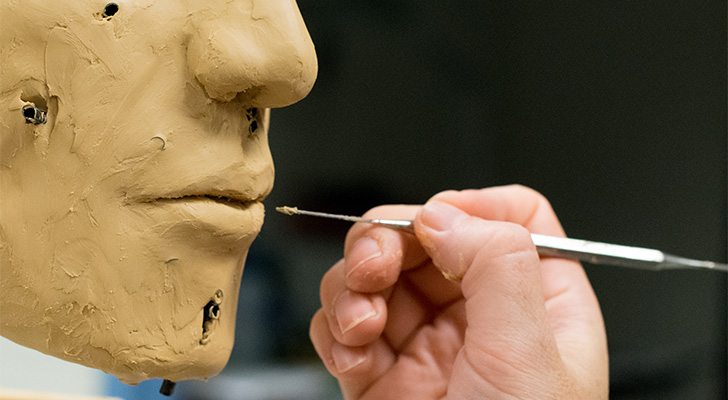
Forensic artists reconstructed faces from cold case files during a week-long workshop at the USF Department of Anthropology.
This is the second year of this special week-long course culminating in the Art of Forensics event on Friday, Oct. 21, that revealed the completed faces along with other details of each case provided by the team of forensic anthropologists.
The course is an opportunity to combine education with the
application of forensic science and modern technology and present the final
busts to a wider audience.
More that 900 unidentified
individuals in Florida and as many as 50,000 nationwide are unidentified.
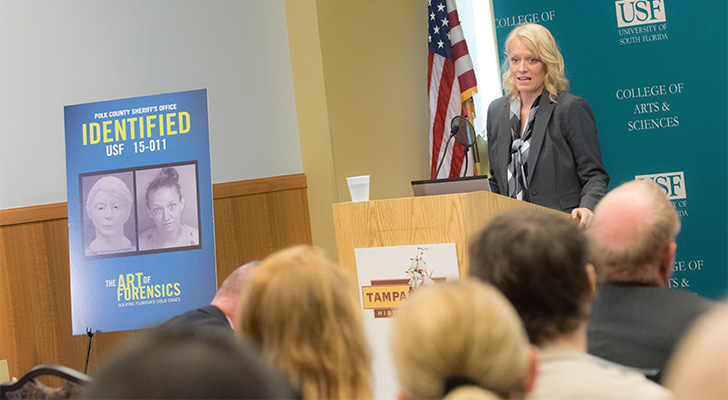
Erin Kimmerle, PhD, forensic anthropologist and associate professor at the USF College of Arts and Sciences, addressed a roomful of law enforcement officers, forensic scientists and media.
“We
look for cases that need the most help. Those that don’t have DNA profiles on
file, those that need chemical isotope testing and facials and that would
really benefit from everything that science has to offer,” Dr. Kimmerle said.
“I'd
like to go crazy with artistic freedom but we can't. We have to keep it very
specific,” said workshop attendee Sergio Soto, a patrol sergeant with the Pasco
County Sheriff’s Office. Soto’s goal is to use the right amount of artistic
skill in conjunction with the forensic evidence.
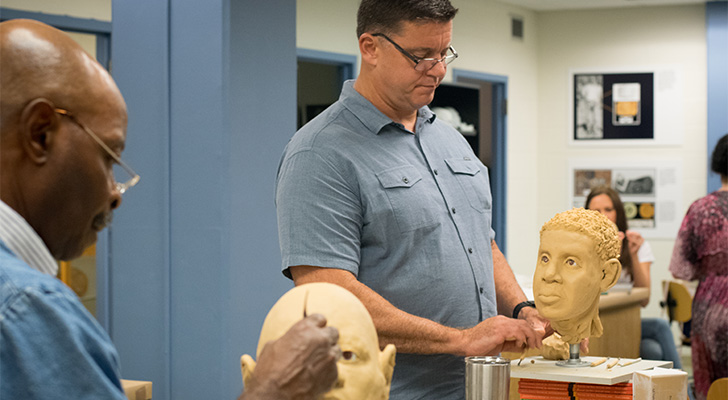
Artists use skulls reproduced with 3-D printing technology.
Joe
Mullins, course instructor and forensic imaging specialist at the National
Center for Missing and Exploited Children, conceived the course eight years ago
to help alleviate some of the cold-case load using facial reconstruction art
classes. The class work was featured in a New
York Times article and led to the facial recognition by a family member, a
match.
The skull, which provides the foundation for this type of reconstruction, was a hurdle to get over to start the class since actual evidence can’t be used. “We had to wait for technology and scanning and 3-D printing to catch up,” Mullins said.
Last year Mullins and Dr. Kimmerle decided to join their skills and tools together and host the first Art of Forensics event. Nine cases were featured and one was resolved.
This
year’s event was held at the Tampa Bay History Center and hosted dozens of
forensic scientists, law enforcement officers, and families hoping to make a
match.
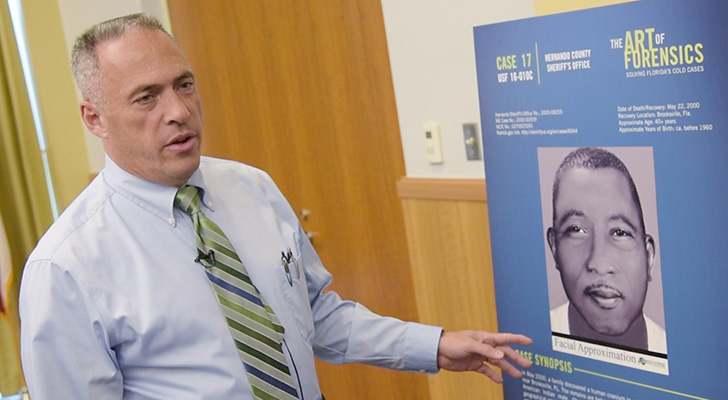
Det. George Loydgren, from the Hernando County Sheriffs Office, featured his case at the Art of Forensics event.
“To me it’s priceless if you can solve one case, bring closure or resolution to one investigation and connect a family member,” said George Loydgren, a cold case detective from the Hernando County Sheriffs Office who’s Case #17 was featured at the event. Dr. Kimmerle and her team conducted a chemical isotope test to estimate the geographic origins from the remains of what is now confirmed to be a 40+ year-old black and/or Native American male.
“We’re passionate about solving
real-world problems” said David Himmelgreen, chair of the Department of Anthropology
at USF, during his opening remarks.
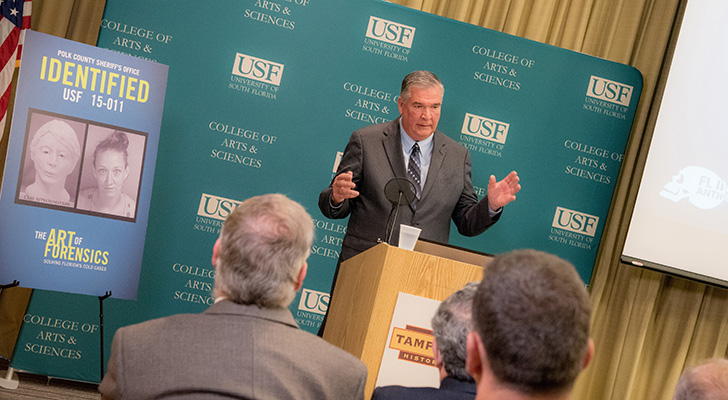
“Our work today will continue to honor our missing and unidentified individuals throughout this nation” said Mark A. Ober, J., state attorney for the 13th Judicial Circuit of Florida.
Speakers included leaders in law enforcement who all share the need to advance this type of work that is threatened by limited funding.
“This is an issue of great public
importance,” said Mark A. Ober, JD, state attorney of the 13th
Judicial Circuit Court of Florida. “Think about the power of your name, think
about the power of your identity, the very mention of your name reveals a
history of your existence, the very mention of your name broadcasts a panoramic
view of your life.”
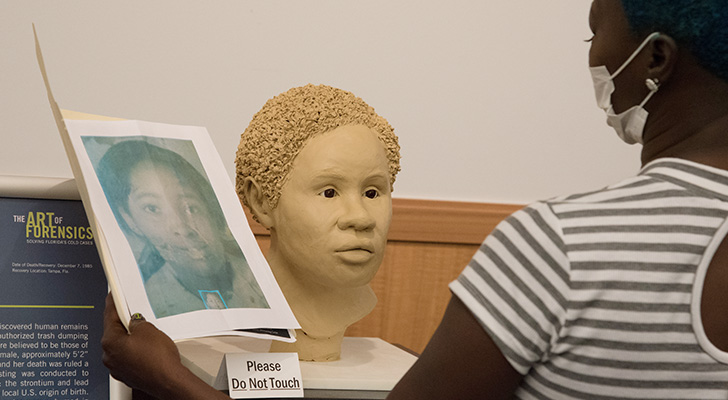
The Art of Forensics event gave family members the opportunity to see the final busts.
Photos and story by Sandra C. Roa, University Communications & Marketing.